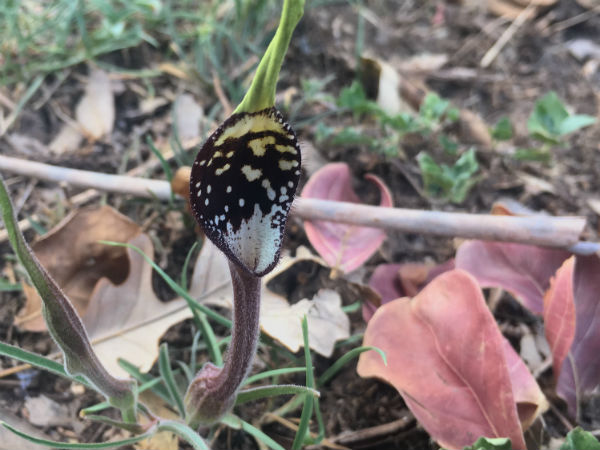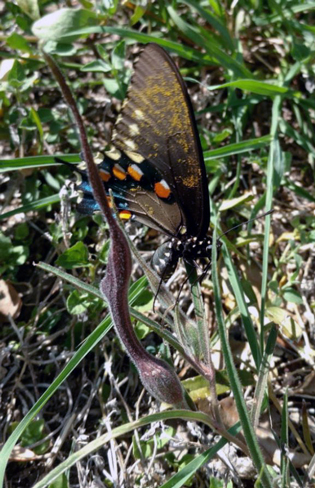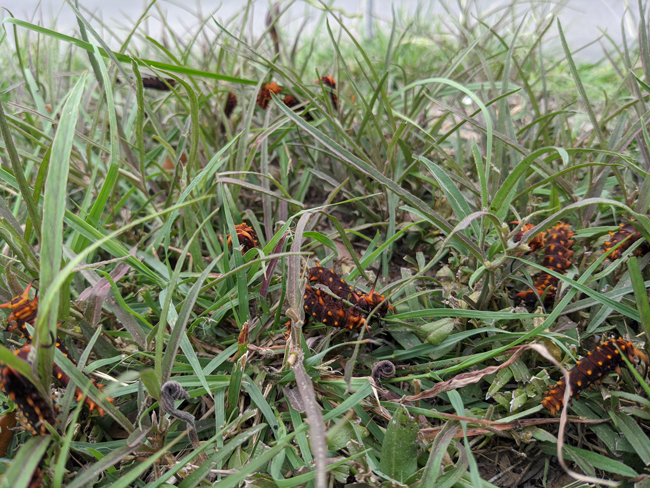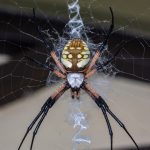If you spot patches of grass with intriguing orchid-like blooms or bold black butterflies hovering about, you’ve likely stumbled upon this native vine.
While most butterfly gardens are works of art lovingly created by their owners, there’s a little-known plant transforming lawns and empty lots into butterfly gardens, too. Finding it can sometimes be tricky, but its intriguing orchid-like blooms, which appear throughout the heat of summer, are a treat for any observant naturalist.

Even though each stem is seldom longer than a few inches, swanflower is a native vine that grows best mixed with short grasses. In fact, its leaves have evolved to mimic grasses which is why it’s often hard to spot. But there are some tricks to finding it.
One of the easiest is to notice the butterfly that uses swanflower as a larval host plant, the pipevine swallowtail butterfly. Adults are large and black with colorful spots and iridescence. If you see one hovering around a patch of grass, it’s likely homing in on swanflower.
 |
 |
The flowers are rather interesting as well. Swanflower is in the pipevine family, so named because most of the members have inconspicuous flowers shaped like Sherlock Holmes’ pipe. Not so with swanflower, which produces a rather large tubular flower with a black and white throat that stands upright. The specific epithet “erecta” is a nod to this unique feature.
Swanflower may be challenging to find in the nursery trade, but it is available at specialty nurseries. I have a few of them growing happily mixed in with my buffalo grass lawn; swanflower can also be added to flower beds. If you plant it, don’t be surprised when hungry caterpillars eat the plant flowers and all to the ground. This will happen two to three time a year and swanflower will grow back every time.
I’ve been taking more walks this summer, and it is surprising how many lawns in my central San Antonio neighborhood have swanflower growing in them. I’ve been keeping my eye on a particularly large patch that is home to many caterpillars. It has been fascinating to watch the successive generations of swallowtails as they grow and mature.
Keep your eyes peeled on your next walk and you may discover you also have swanflower growing near you.




